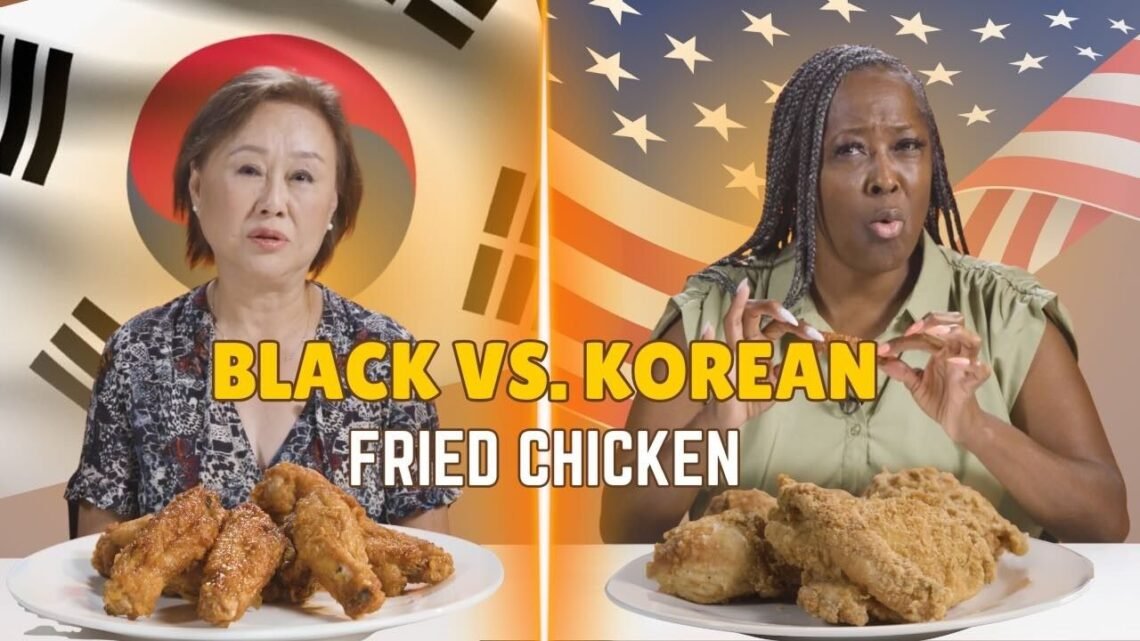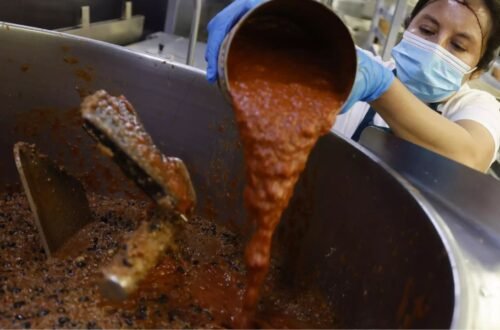Craving crispy, juicy fried chicken? Two standout styles dominate the conversation: Korean fried chicken and Soul food (Southern) fried chicken.
In this taste test experiment, we swap techniques, brines, coatings, and sauces to see which style reigns supreme—or whether the mashup steals the show.
Why This Fried Chicken Face-Off Matters Now
In 2025, Korean fried chicken is experiencing a surge in popularity globally, expanding rapidly in the U.S.
Meanwhile, classic Southern fried chicken continues to hold its revered place in American kitchens.
As diners chase bold flavors and elevated textures, understanding how each method works—and what happens when they swap techniques—can level up your cooking game and your palate.
Core Methods: What Makes Each Style Unique
Korean Style (K-Style)
- Uses a starch-rich batter or dredge (often rice flour, potato starch or corn starch) to achieve an ultra-light crisp.
- Practically always involves a double fry: a first simmer cook, rest period, then a second very hot quick fry to harden the crust.
- Final step: a sauce toss or glaze, such as a sweet-spicy chili paste (gochujang base) or honey soy glaze.
- Fry temperatures often hover around mid-300s °F, with the second stage pushed higher briefly.
Soul Food / Southern Style
- Begins with a buttermilk (or milk + acid) brine/marinade, sometimes extended 4–12 hours, to tenderize and season throughout.
- Uses a flour-based dredge (seasoned flour with spices like paprika, garlic powder, cayenne, salt, pepper).
- Typically a one-stage fry in neutral oil (or peanut/lard blend) at moderate temperature (low to mid 300s °F) until the interior reaches safe doneness.
- No sauce finishing—seasoning comes baked into the crust, and the chicken is served dry or with sides.
Safety & Doneness
Regardless of style, always aim for an internal temperature of 165 °F (74 °C) in the thickest part of the chicken.
Use a reliable meat thermometer. Fry in small batches so oil temperature remains stable.
The Recipe Swap Experiment
Here’s what happens when each style borrows from the other:
| Element | K-Style Using Southern Methods | Southern Style Using K Techniques |
|---|---|---|
| Brine / Marinade | Buttermilk + salt + garlic + paprika for 4–8 hrs | Light soy + ginger + garlic marinade, shorter soak |
| Coating | Switch to seasoned flour dredge (no heavy starch) | Use more starch (potato/cornstarch) in dredge or batter blend |
| Fry Strategy | One fry at medium temperature (325–350 °F) | Double fry: first at ~350 °F, rest, then a quick hotter final fry |
| Sauce / Finish | Optionally toss with Korean glaze (gochujang–honey mix) | Keep dry or lightly brush sweet-hot glaze so crust survives |
| Texture Outcome | Slightly sturdier crust with more seasoning depth | Ultra-crispy, glassy shell; seasoning more subtle or clean |
| Best Pairings | Southern sides like collards, cornbread, pickled veggies | Korean sides like kimchi, pickled radish, scallion salad |
What We Learned in Taste Tests
- The K-style version with buttermilk brine gained depth and juiciness without sacrificing too much crisp, especially when lightly glazed at end.
- The Southern version with double fry technique produced a stunning, thin shell with excellent crunch, though its seasoning profile softened a bit.
- In blind tests, diners noted that the hybrid choice—Southern brine + double fry + light glaze—often edged ahead, offering both texture and flavor harmony.
2025 Trends Lighting the Way
- Double fry techniques are cropping up more often even in Southern-style chicken recipes, as chefs chase that ultra-crisp shell.
- New “sweet-spice” glazes (honey + chili, citrus + gochugaru, etc.) are trending, blurring the line between savory and saucy styles.
- Chains expanding globally are introducing recipe crossovers, like Korean-style specials on traditionally Southern menus, fueling consumer curiosity.
- Home cooks are experimenting: buttermilk brines paired with starch coatings, and lighter glazes that don’t overpower the crust.
Tips for Pulling Off the Swap at Home
- Control your oil temperature — small batches and a good thermometer prevent burning or soggy crusts.
- Adapt your crust mix — you can add starch to your flour dredge or reduce starch in a Korean mix for balance.
- Rest between fries — letting pieces cool slightly before the second fry keeps moisture at bay.
- Don’t over-sauce — apply just enough glaze post-fry so it sticks but doesn’t mask texture.
- Start with dark meat (thighs/legs) — they hold up better in these hybrid methods than white meat.
The Korean vs. Soul food fried chicken showdown reveals that each style brings a unique strength: Korean techniques deliver unmatched crisp, Southern method brings deep seasoning and flavor in the meat.
The best path is often a hybrid: buttermilk-brined chicken taken through a double fry and finished with a light glaze.
That way, you get crackling texture and rich taste in one bite.
As fried chicken continues to dominate 2025 food trends, mastering both approaches—and knowing how to swap between them—is your ticket to fried-chicken greatness.
FAQs
What oil works best for both styles?
Neutral, high-smoke-point oils like peanut, canola, or sunflower give clean flavor and stable heat for double-frying or cast-iron frying. (Follow the temperatures above.)
How do I keep the crust crispy after saucing?
For K-style, toss quickly in a warm gochujang/soy-garlic glaze right before serving; don’t let it sit. For soul food, sauce on the side keeps the crust craggy.
Can I bake or air-fry and still get the same results?
You can get good results, but not the same shatter or craggy crust. The double-fry and hot-oil set the textures that define each style. Use a thermometer either way to hit 165°F.









